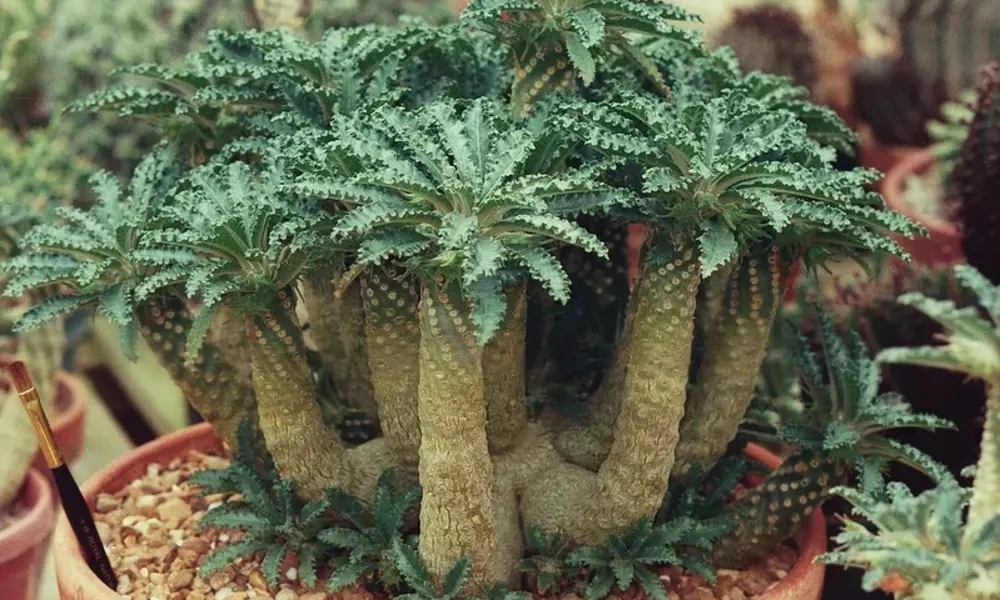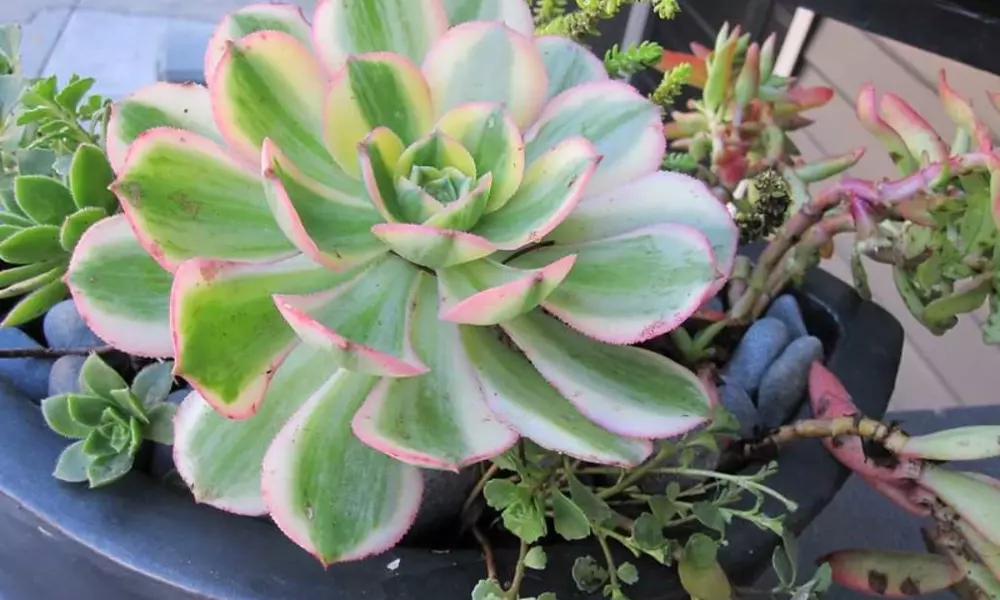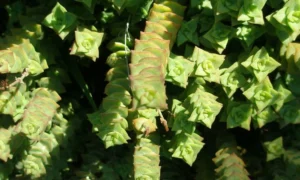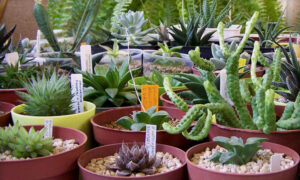When it comes to cultivating low-light succulents, choosing the right containers is an essential factor to consider. Many succulent enthusiasts encounter common problems such as root rot, inadequate drainage, and limited space for root development when they don’t carefully select suitable containers.
Extensive research on container options for low-light succulents has led to promising solutions. By selecting containers that provide proper drainage, sufficient space for root growth, and suitable materials, you can create an optimal environment for your beloved low-light succulents.
In this article, we will explore various container options, delve into the research-backed benefits of each, and present practical solutions for choosing the right containers.
By the end, you’ll have the knowledge and confidence to make informed decisions and provide the best-growing conditions for your low-light succulents. So let’s dive in and transform your container choices into a thriving haven for these beautiful and resilient plants.
How Much Light Do Low Light Succulents Need?
When it comes to low-light succulents, it’s important to understand their specific light requirements. While they can tolerate less light than their sun-loving counterparts, they still need some degree of brightness to survive and thrive.
Here are some key points to keep in mind:
- Indirect Light: Low-light succulents prefer indirect sunlight, such as a bright spot away from direct sunlight or near a north-facing window.
- Bright but Filtered Light: They do well in areas with bright, filtered light, such as rooms with sheer curtains or partially shaded spaces.
- Avoid Dark Corners: Low-light succulents should be placed where they receive some ambient light. Avoid dark corners or areas with minimal natural light.

The Best Low Light Succulents to Grow as Houseplants
Now that we understand the light requirements, let’s explore some of the best low-light succulents that you can grow as houseplants. These plants not only thrive in low light conditions but also offer unique beauty and character to your indoor space.
1. Snake Plant (Sansevieria)
- Description: Snake plants, also known as “mother-in-law’s tongue,” have long, upright leaves with vibrant green coloration and interesting patterns.
- Low Light Adaptability: Snake plants are renowned for their ability to thrive in low-light environments, making them perfect for offices or rooms with limited natural light.
- Care Tips: They prefer infrequent watering and well-draining soil, making them easy to care for and low maintenance.
2. Lance Aloe (Aloe broom)
- Description: Lance aloe plants feature slender, lance-shaped leaves with beautiful textures and shades of green.
- Thriving in Low Light Conditions: Lance aloes can tolerate low light settings and are known for their resilience and ability to adapt.
- Watering and Propagation: They require well-draining soil and moderate watering. Propagation is possible through offsets or stem cuttings.
3. Echeveria
- Overview: Echeverias are rosette-shaped succulents with stunning color variations, ranging from pastel pinks to vibrant purples.
- Low Light Tolerance: While echeverias prefer bright light, certain varieties like Echeveria ‘Black Prince’ or ‘Lola’ can adapt well to low light conditions.
- Soil and Watering Guidelines: Use a well-draining soil mix and water echeverias when the soil is dry to the touch.
4. Panda Plant (Kalanchoe tomentosa)
- Description: Panda plants are characterized by their fuzzy, silvery leaves with brown markings, resembling the coat of a panda.
- Adapting to Low Light Environments: These plants can handle lower light levels, but they will appreciate some bright, indirect light to maintain their vibrant appearance.
- Pruning and Repotting: Prune leggy growth and report when necessary to ensure optimal health and growth.
5. Ox Tongue Plant (Gasteria)
- Unique Leaf Structure and Colors: Ox Tongue plants have thick, tongue-shaped leaves with interesting patterns and colors, ranging from dark green to mottled gray or reddish-brown.
- Suitable Light Levels for Gasteria: These succulents can tolerate low light conditions, making them ideal for indoor spaces with limited natural light.
- Fertilizing and Watering: Gasteria plants require infrequent watering and should be fertilized sparingly during the growing season.
6. Zebra Haworthia (Haworthiopsis attenuate)
- Description: Zebra Haworthia plants have striking, dark green leaves with white horizontal stripes, resembling zebra patterns.
- Thriving in Low Light: These succulents are well-suited for low-light environments and can add an eye-catching touch to your indoor decor.
- Care Tips: Zebra Haworthias prefer well-draining soil and require minimal watering, allowing the soil to dry out between waterings.
7. Mistletoe Cactus (Rhipsalis)
- Unique Growth Habit: Mistletoe Cacti have long, trailing stems with delicate, hanging foliage, creating an elegant and cascading effect.
- Low Light Adaptability: These cacti thrive in low light conditions and are perfect for hanging planters or areas where they can trail down.
- Watering and Humidity: Mistletoe Cacti prefer slightly more moisture than other succulents, but it’s important to allow the soil to dry partially between waterings.

Low Light Succulents for Hanging Planters
If you’re looking to elevate your indoor gardening game with hanging planters, here are three low-light succulents that are perfect for suspended displays:
1. String of Hearts (Ceropegia woodii)
- Delicate Trailing Foliage: The string of Hearts features long, trailing vines with small, heart-shaped leaves in shades of green and silver.
- Suitable for Hanging Planters: This succulent is an excellent choice for hanging planters, as its vines gracefully cascade down, creating a beautiful display.
- Watering and Care: String of Hearts prefers well-draining soil and moderate watering, allowing the soil to dry out slightly between waterings.
2 String of Pearls (Senecio rowleyanus)
- Unique Bead-like Appearance: The string of Pearls showcases spherical, bead-like leaves that resemble a string of pearls, hence its name.
- Adapting to Low Light: While it thrives in bright, indirect light, this succulent can adapt to lower light conditions, making it suitable for hanging planters in various spaces.
- Watering and Propagation: String of Pearls requires well-draining soil and should be watered sparingly, as overwatering can lead to root rot.
3 Burro’s Tail (Sedum morganianum)
- Stunning Trailing Growth: Burro’s Tail is known for its trailing stems adorned with fleshy, blue-green leaves that create a visually appealing display.
- Low Light Compatibility: This succulent can tolerate low light levels, making it an ideal choice for hanging planters in areas with limited natural light.
- Care and Maintenance: Burro’s Tail requires well-draining soil, minimal watering, and protection from excessive rainfall to prevent leaf drop.
Flowering Low Light Succulents
If you’re looking to add a splash of color to your indoor garden, consider these two low-light succulents known for their beautiful blooms:
1 Wax Plant (Hoya carnosa)
- Description: Wax Plant features waxy, succulent leaves and clusters of star-shaped flowers that emit a sweet fragrance.
- Low Light Blooms: While it prefers bright light, Wax Plant can still produce lovely blooms in low light conditions, albeit with fewer flowers.
- Blooming Tips: Provide occasional bright, indirect light and a well-draining soil mix to encourage blooming. Be patient, as blooms may take some time to appear.
2 Holiday Cacti (Schlumbergera)
- Varieties: Holiday Cacti include the Thanksgiving Cactus (Schlumbergera truncata) and the Christmas Cactus (Schlumbergera x buckleyi).
- Flowering in Low Light: These cacti are renowned for their vibrant blooms, which can be induced even in low-light environments.
- Flowering Requirements: To stimulate blooming, provide a period of reduced light and cooler temperatures (around 50-55°F) for 6-8 weeks before the desired blooming time.
More Low Light Succulents
Here are a few additional low-light succulents worth considering for your indoor garden:
- Aloe: Many Aloe varieties, such as Aloe vera, can adapt to low light conditions, but they will thrive better with some indirect sunlight.
- Gasteria: Gasteria species, including Gasteria bicolor and Gasteria verrucosa, are known for their ability to tolerate low-light environments.
- Haworthia: Various Haworthia species, such as Haworthia fasciata and Haworthia cooperi, can flourish in low-light settings.
- Echeverias: While most echeverias prefer bright light, certain varieties like Echeveria ‘Black Prince’ or ‘Lola’ can adapt well to low light conditions.
What Does Low Light Mean?
When we refer to “low light” for succulents, it means providing them with less direct sunlight than their sun-loving counterparts.
Low light conditions typically involve placing the succulents in areas with indirect or filtered light, away from intense sunlight exposure.
While succulents can survive in low-light environments, it’s crucial to strike a balance by providing them with enough light to support their growth and prevent etiolation (stretching).
How Much Light Do Low-Light Succulents Need?
Low-light succulents still require some degree of brightness to thrive. Here are general guidelines for their light requirements:
- Indirect Sunlight: Place them in bright spots away from direct sunlight, such as near a north-facing window or in rooms with filtered light.
- Filtered Light: Low-light succulents do well in areas with bright, filtered light, such as rooms with sheer curtains or partially shaded spaces.
- Avoid Dark Corners: It’s essential to position low-light succulents where they receive some ambient light, as they can’t survive in complete darkness or areas with minimal natural light.
Final Thoughts
Low-light succulents to your home or office are a wonderful way to bring greenery and life to your space, even in areas with limited natural light. Remember to find the right balance of light for each species, provide them with well-draining soil, and water them appropriately based on their needs.
With proper care and attention, these low-light succulents will thrive and bring you joy with their unique shapes, colors, and occasional bursts of beautiful blooms. Enjoy the beauty and tranquility that these resilient plants bring to your indoor garden!
Conclusion
Low-light succulents offer a wonderful solution for those seeking to incorporate greenery into spaces with limited natural light. With their unique shapes, colors, and occasional bursts of blooms, these resilient plants bring beauty and tranquility to any indoor garden.
By providing them with the right balance of light, well-draining soil, and appropriate watering, you can enjoy the benefits of low-light succulents in your home or office.
From the striking Snake Plant to the delicate String of Hearts, there is a wide range of low-light succulents to choose from, allowing you to find the perfect fit for your space and personal style. So, don’t let low light hold you back from creating a thriving succulent haven.
 Watch Chain Succulent: A Growing Guide |
 10 Stunning Large Succulent Plants for Your Garden |
FAQs
Q1. What succulent needs the least amount of light?
Snake Plant (Sansevieria) is known to be one of the succulents that require the least amount of light. It can tolerate low light conditions and still thrive.
Q2. Do any succulents do well in low light?
Yes, some succulents can thrive in low-light conditions. Some examples include the Snake Plant (Sansevieria), ZZ Plant (Zamioculcas zamiifolia), and Haworthia.
Q3. Which succulents like indirect light?
Many succulents thrive in indirect light conditions. Some examples include Echeveria, Aloe Vera, Haworthia, and Jade Plant (Crassula ovata).
Q4. What do succulents grow in the dark?
No succulents can truly grow in complete darkness. All succulents require at least some amount of light to survive and thrive. However, certain succulents like Snake Plant (Sansevieria) and ZZ Plant (Zamioculcas zamiifolia) can tolerate low light conditions better than others.
